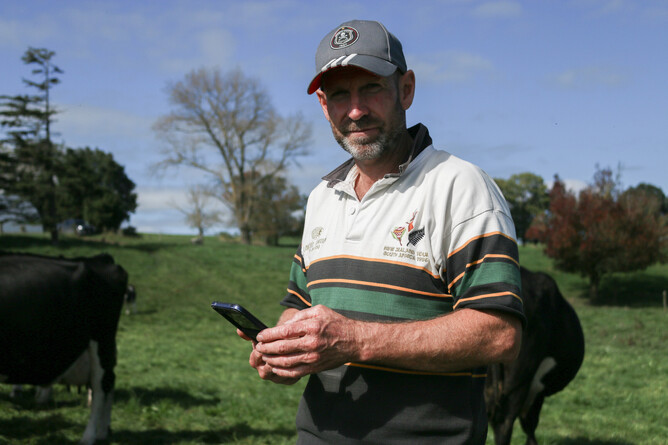The New Zealand dairy industry needs more technology managers as much as they need staff on the ground who can milk cows, says a leading Waikato dairy farming family.
Morrinsville farmer and former Fieldays New Zealand Chair Lloyd Downing says technology being introduced to New Zealand dairy farming can revolutionise efficiency, but the industry needs tech experts, not just more staff that can milk cows.
“Technological innovation across dairy farming has moved hugely in my family’s three generations of farming. We now have access to data generating tools and automation that creates efficiency in all areas of dairy farming, but the industry needs more staff proficient in tech to really drive it forward,” says LLoyd.
“Industry bodies and training organisations need to be thinking about how we upskill our future generation of farm leaders, so the industry can really capitalise on the technology available,” says Lloyd.
On his own farm, managed by his son Justin, they have moved to SenseHub® Dairy collars, and they credit the technology in part with halving their empty rate. In the first season of using the collars their empty rate fell to 6.9 percent.
Lloyd’s son Justin manages the 200-hectare farm milking 510 cows near Morrinsville. A highly skilled staff member who was key to picking the herd’s in-heat cows retired from the industry last season and Justin was left struggling to replace him.
“He was instrumental for us during mating season and highly skilled at picking in-heat cows. I realised that finding and training a replacement staff member in the current labour market was going to be tough. That’s when we decided to investigate the SenseHub Dairy collars,” says Justin.
While he was skeptical if the technology would work as well as his staff member, the impact on the farm was almost immediate.
“We would usually need three staff in our shed at mating. SenseHub Dairy collars have removed the need for that many people and our empty rate dropped this mating season to just 6.9%. We haven’t had it that low for about six years. It usually sits anywhere between 8% and 12%,” says Justin.
“This is just one example of how technology is driving efficiency on dairy farms, it’s just about farmers harnessing it,” says Lloyd.
He says the SenseHub interface and support has made using the technology simple.
“It’s amazing being able to ring someone up and they know your farm and can help you trouble shoot any issues. The support from MSD Animal Health in relation to the SenseHub technology is great. These collars have proven to be a real game changer on our farm,” says Lloyd.
The Downing farm covers rolling to steep terrain which can make managing the herd a challenge. The family decided to shift to technology, not only to accurately identify cows ready for mating, but also to reduce staff workload and manage herd health and productivity.
“Technology has come such a long way. We can now turn electric fences on and off without having to be anywhere near the energizer. We have technology like SenseHub software that can provide us with data that can be used to support the health of your herd every day. Weighing and EID technology can drive critical decision making on farms. Farmers are doing well but staff skilled in driving this technology could lead to even greater gains,” says Lloyd.
Alongside improving their empty rate, the SenseHub technology alerted staff to specific animals at risk, triggering human intervention and a diagnosis of mastitis or milk fever, along with alerting staff to the increased risk of heat stress by identifying increases in herd level heavy breathing.
“The collars have been priceless in helping catch issues early, allowing them to intervene as they monitor each cow’s activity and rumination,” says Justin.
“We get a health alert to the app on our phone when a cow’s active minutes are down, or she is not ruminating as much. We can do a quicksort and draft her out when she comes into the shed so we can visually inspect her,” says Justin.
The system has picked up at least two cows that were having issues that the team wouldn’t have otherwise known.
“It meant we were able to get ahead of the issue before it became a real problem. One of them had mastitis which we were able to catch early and treat,” says Justin.
“It has also alerted us to a potential issue with an alert that the cows’ active rumination minutes were well down. It turned out that the cow had a potential case of milk fever. We were able to get to the paddock before she went down giving us a head start on treating her,” says Justin.
The technology means Justin can also monitor what’s happening on the farm even when he’s not there.
“You get a sorting report and while I’m sitting drinking my coffee, I can see the cows getting drafted out of the herd in the shed.”
The team can also automatically sort cows as they are bringing them into the shed.
“If we’re getting cows into the shed and there is a lame cow lingering at the back of the herd, we can punch her number into the system and it will draft her out once she gets to the shed,” says Justin.
